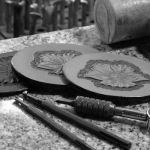
'Dollar' sized wallet, hand stitched in veg tan leather.
By
ConradPark, in Purses, Wallets, Belts and Miscellaneous Pocket Items

By
ConradPark, in Purses, Wallets, Belts and Miscellaneous Pocket Items